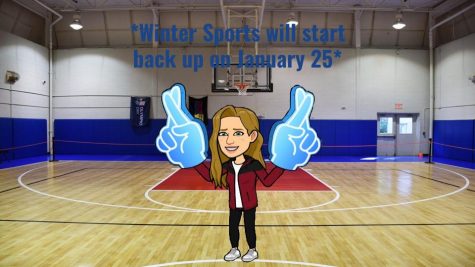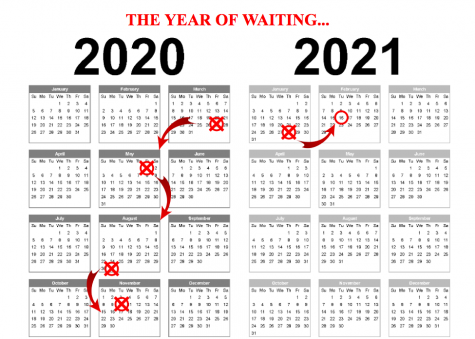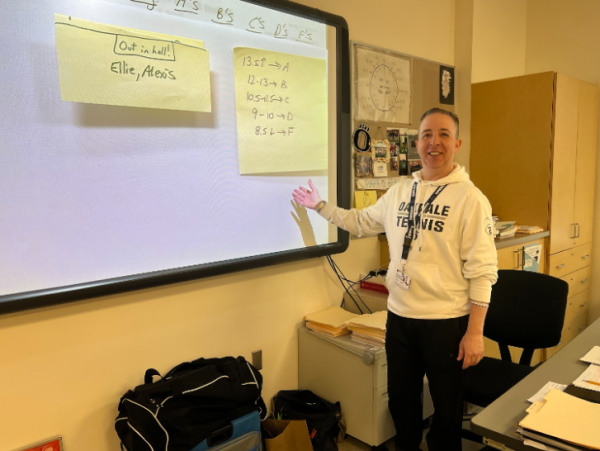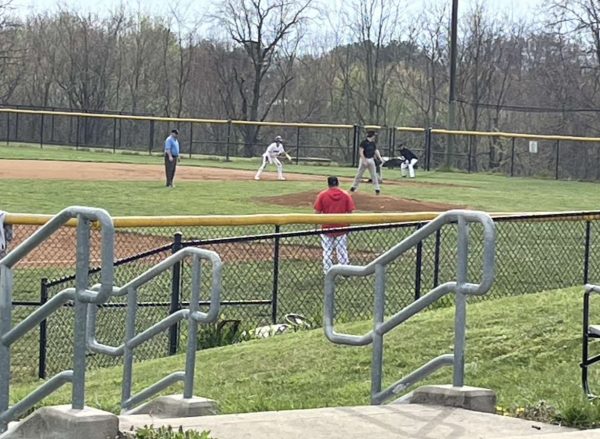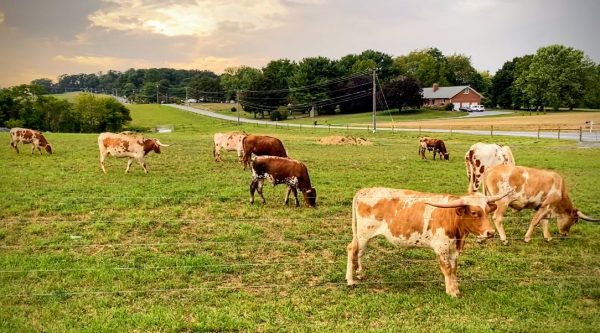500 yards, 50 miles apart: Swimmers adapt to competing during Covid-19
Swimmers Neilson Parrott (left) and Gabriel Erb (right) maintain a social distance in the water.
Samuel Lee touches the wall to finish off his 500 yard freestyle. He looks up and asks the timer for his time. He hopes he had a personal best, but he won’t know how he placed until the opposing teams have posted their own results online–maybe as much as a week later. The world is going virtual, and it’s taking swimming right with it.
Monocacy Aquatic Club has been practicing indoors at Hood College in Frederick, Maryland, but Covid-19 has wreaked havoc on schedules, practices, protocol and competition.
Hood College has given MAC a strict set of guidelines that they must follow, and the swimmers are complying–even though it’s like being fish out of water.
For one, MAC has created smaller groups of swimmers for practices. Before March, the team practiced with 20-30 swimmers in eight lanes, four or more to a lane, kickin’ up spray and breathing hard. That is no more. The new protocol is that swimmers must merge two lanes to create one large lane, and have 8 people per lane.
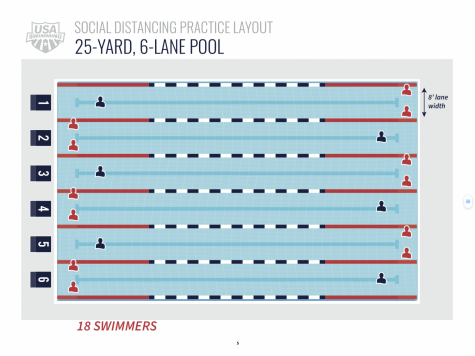
In August, Hood College discovered one case of Covid-19 and other students were showing symptoms. They immediately shut down the entire campus, including the pool. For three days, MAC could not practice. This is just the first time, and realistically, the team can expect this to occur more than once.
“Well, I’m not totally surprised it happened. I’m pretty happy it was as minor as it was,” said MAC coach Joseph Hawkins.
Practice has been a very different experience for the swimmers and coaches. Obeying protocols in a pool is not always easy. Regardless, MAC is grateful to have a place to swim.
“It’s a bit different having to stay six feet apart, but not the worst experience and I’m still glad that we can swim,” said MAC swimmer Andrej Gibson.
MAC is one of the more fortunate teams in Maryland. Many other competitive teams are still trying to find a pool for practice.
Handling Covid-19 is harder to pull off at an indoor pool vs. an outdoor pool. The Hood College pool is indoor, so MAC has stricter rules compared to other teams.
“I think they are handling it well with all of the guidelines that they’ve added to ensure our safety and allow us to continue swimming,” said Gibson.
“MAC has done a great job at putting safety regulations in place that protect athletes and the public,” said Hawkins.
While being safe is the most important focus, it doesn’t always lead to everyone’s satisfaction. Social distancing has led to less and less face-to-face interaction with other swimmers.
“The safest thing we do is the distancing, but it’s frustrating because then we can’t talk to each other like we used to.” said swimmer Ivan Shandrenko.
MAC had to reduce the maximum number of swimmers per group to 16. Two groups usually practice at the same time, so about 32 swimmers and 2-3 coaches are on the deck at a time.
When swimmers walk into the facility, they must first get their temperatures taken. Once cleared for entrance into the pool, swimmers will go to their assigned seats, which are all six feet apart from each other. Swimmers must stay in these seats until they get into the water, where they must also maintain a social distance.
A big problem is the locker rooms. No more than two people are allowed inside each locker room, and the swimmers can only use the locker room if they need to go to the bathroom. Changing is not allowed, so swimmers must put their clothes over their wet swimsuits. On top of being uncomfortable, cold temperatures are approaching quickly, and athletes will be outside in their wet swimsuits.
Practice length has been reduced for all groups. Before Covid-19 struck, the higher age groups (12 and up) were practicing 2-3 hours a day. Now, in order to establish a time schedule so that each group has a chance to practice, practices have been reduced to 90 minutes to 2 hours. Swimmers now are also unable to participate in drylands (on-land workouts).
MAC swimmers feel like they do a good job of staying safe. “I think the swimmers are doing a tremendous job being safe and social distancing. With that said, many of these kids have been close friends for years and occasionally need reminding to remain 6 feet apart. Friends that go through the training these kids endure are like magnets and are instantly attracted to each other, especially the ones that are 13 and older having been friends for a longer period of time,” said MAC Coach Chris Gibeau.
USA Swimming is creating a plan in order to compete this season without having multiple teams go to the same pool. MAC has just officially released the date of the first swim meet on October 9, 10, and 11.
“Virtual meets are a double-edged sword. Part of what motivates athletes is face to face competition with other teams where the excitement level in the venue is often high enough to taste in the air. Not having that could impact performance a bit,” said Gibeau.
Virtual meets will make it tougher for athletes looking for college scholarships as well. At larger meets, such as the Maryland State Swimming Championships, scouts are in the crowd and watch swimmers compete. They decide if they want someone to go to their college. But with virtual meets, scouts will not be able to see the swimmers compete in real life.
MAC is hoping to get back to normal as quick as possible, as is everyone. But for now, MAC must obey these protocols in order to keep practices going.
Your donation will support the student journalists of Linganore High School. Your contribution will allow us to purchase camera/recording equipment and cover our annual website hosting costs. We hope to raise enough money to re-start a monthly printed issue of our paper.





